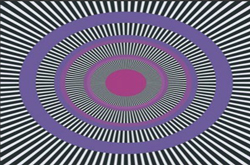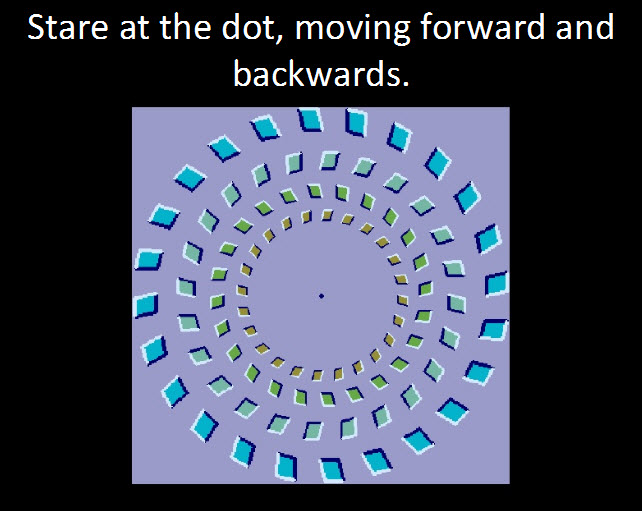Here is a fascinating collection of visual illusions you’ll enjoy. It’s stunning how our minds can perceive images that actually differ from objective reality.
Yes, our own brain seemingly enjoys tricking us sometimes. I think I hear mine snickering at me right now. Or do I?
An optical illusion (also called a visual illusion) is characterized by visually perceived images that differ from objective reality.

The information gathered by the eye is processed in the brain to give a percept that does not tally with a physical measurement of the stimulus source.
When we experience a visual illusion we may see something that is not there or fail to see something that is there or even see something that’s different from what is there!

Because of this dissociation between perception and reality, visual illusions demonstrate the ways in which the brain can fail to recreate the physical world. By studying these failings, we can learn about the computational methods that the brain uses to construct visual experience.
TYPES OF OPTICAL ILLUSIONS
There are 3 main types of optical illusions: Literal Optical Illusions, Physiological Optical Illusions, Cognitive Optical Illusions
LITERAL OPTICAL ILLUSIONS
Literal optical illusions are those illusions that create images that are different from the objects that make them.
PHYSIOLOGICAL ILLUSIONS
Physiological illusions are presumed to be the effects on the eyes or brain of excessive stimulation of a specific type – brightness, tilt, color, movement, etc. The theory is that stimuli have individual dedicated neural paths in the early stages of visual processing, and that repetitive stimulation of only one or a few channels causes a physiological imbalance that alters perception
COGNITIVE ILLUSIONS
Cognitive illusions are assumed to arise by interaction with in-built assumptions or ‘knowledge’ of the world, leading to “unconscious inferences”, an idea first suggested in the 19th century. Cognitive illusions are commonly divided into: Ambiguous Illusions, Distorting Illusions, Paradox Illusions Or Fiction Illusions.
